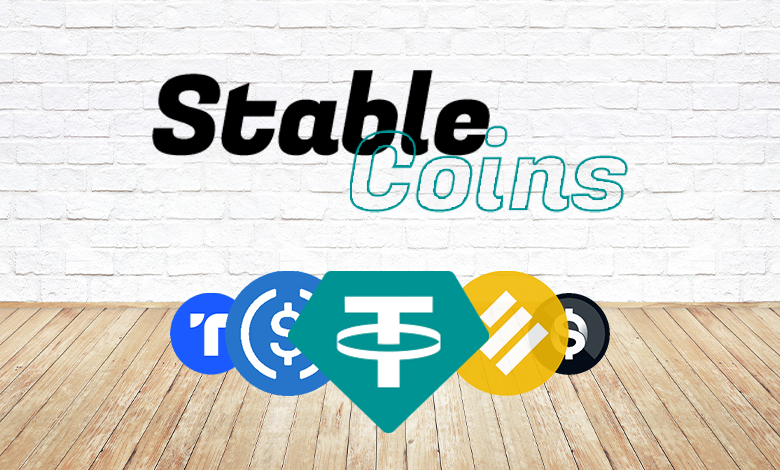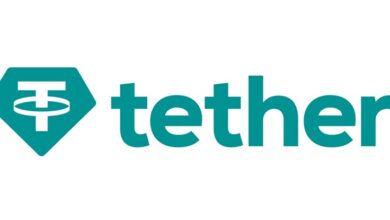Exploring the Legality of Stablecoins: A Comprehensive Overview of Digital Currency Evolution

Cryptocurrencies have emerged as digital novelties to serve the function of money.
With their underlying technologies, cryptocurrencies came with the intent to solve the problem that has long persisted: how to transfer economic value across space and time.
To understand cryptocurrencies, one must first understand the function and history of money.
History of money
Money is essentially a good that serves as a widely accepted medium of exchange. In other words, it is a good that is purchased not to be consumed or used in producing other goods, but to be exchanged for other goods.
Throughout human history, several things have served as money: seashells, copper, cattle, salt, precious stones, silver, gold, among others.
Today, the entire world is run on government money. The role of precious metals and stones became ceremonial while government money is currently the commonly used medium of exchange.
Talking about government money, the U.S. dollar is the most widely accepted and traded currency in the world. In plain english, a currency represents government-issued papers or coins used as a means of exchanging goods and commodities.
Before currencies were invented, people used to exchange essential products and services with one another, commonly known as barter. For example, a lumberjack would trade a pound of wood for two pounds of chicken for lunch.
Down the road, civilizations realized that this method of exchange is highly impractical and inefficient as the difficulty of the exchange and the number of parties participating in the exchange increased.
If a lumberjack wanted some chicken, a farmer wanted surgery and a doctor wanted some wood, they would all have to meet in order to barter their goods and services.
Simply put, the problem with this way of direct exchange was the lack of coincidence in scales, in time frames, and in locations.
Civilizations then decided to use one single commodity to trade for any good or service.
They decided that precious metals, most notably gold and silver, would be tradeable and divided the metals into uniform coins making them more salable across time and space.
Standardizing values into easily distinguishable and equal sized coins allowed for the creation of larger markets and facilitated international trade.
With the expansion of modern banking, metal coins were then replaced by paper money backed by gold in the treasuries of central banks.
Relative to metal coins, paper money was certainly easier to travel with. It was until the 1960s, when the move towards a U.S. dollar global standard started to shape up and the U.S. became the center of the international monetary system, with its dollars being held as a global reserve currency by central banks.
Stablecoins
Although you might be confused as to what might the early history of money do with stablecoins on the blockchain, their stories are quite similar.
When blockchain was initially created, the first token to ever exist was Bitcoin.
Bitcoin, according to Satoshi Nakamoto, was intended to be a means of exchange that would replace traditional centralized currencies as Bitcoin is completely decentralized and offers a peer-to-peer payment system where members can verify all transactions without needing to trust any network member.
Bitcoin is simply a currency without a government.
Bitcoin’s strictly limited supply makes it arguably the best store of value in human history. As a matter of fact, due to its scarcity and as savings demand on it continues to increase massively, Bitcoin has often been referred to as decentralized gold.
However, the issue is that with time, the persistence of the high price volatility of Bitcoin stemming from the erratic variation of demand from day to day, will prevent Bitcoin from serving as a unit of account, at least until the fraction of people who hold Bitcoin and deal with it significantly increases and Bitcoin’s share of international settlement transactions and the global money supply becomes a majority share.
With the expansion of blockchains and people following the footsteps of Nakamoto, more blockchains came into existence, and Vitalik Buterin created a new blockchain, Ethereum, a do-it-yourself platform, which allowed for the creation of “decentralized programs” using Ethereum’s coding language “Solidity”.
Solidity is used in writing smart contracts, the set of conditions for decentralized applications. This revolutionary idea pushed a flock of developers to create applications and products that would leverage the decentralization of blockchain and attract more users who might be interested in the products offered.
Now, there are many tokens like Bitcoin and each group of developers has a certain token or product to offer. So, for people to obtain other products or services, bartering came back into play.
You should give me the token you created for my NFT! And so, the larger the number of participants involved in the transaction, the harder it gets. We can now see the similarities with the early means of exchange.
Therefore, there had to be a certain currency (or token) on the blockchain that everyone agreed to exchange their products and services for. This currency should be easy to hold, should have a stable value, and should represent the same value across different blockchains. Nevertheless, it was hard to accomplish this; currency wars erupted and this debate created a turmoil for a long time.
Eventually, everyone decided to avoid the debate and a smarter idea came across.
Since the dollar and other national currencies are already the approved means of exchange outside of the blockchain, why not make them the approved means of exchange on the blockchain as well?
This is how the notion of stablecoin came into existence.
A stablecoin is basically a token that represents a real currency or an asset on the blockchain.
Now the question is how was that even possible and what were the benefits?
First of all, old civilizations realized that they had to divide the metals into equal sized and indistinguishable coins so that payments could be made with the number of coins rather than with weights.
Similarly, the tokens on the blockchain, are fungible tokens that can be interchanged without any distinction between them, the number one rule for any currency.
Fungible tokens on the blockchain are represented the same way your money is represented in the bank, as a number in a database. For instance, if a user sends 1000 tokens from one address to another, the number is subtracted from their account in the database and added to the other account.
Stablecoins were also created as fungible tokens on the blockchain. These coins were created in an attempt to overcome the problem of high price volatility in the crypto market which hindered the wider adoption of crypto assets.
Hence, the major aim of stablecoins was to maintain a stable value against a specific asset or a combination of assets so that people will be willing to accept it without the fear of losing its value tomorrow. Therefore, to create a stablecoin backed by dollars, protocols had to lock a certain amount of real dollars in the bank as cash or treasury bills to mirror the amount of tokens circulating on the blockchain.
Stablecoins offer a convenient payment method as it allows for the fast and seamless transfer of a stable real currency without the need for third parties, like banks, to review the transaction and have any say in it.
Transfers of millions of dollars could now be done with an instant. Would that open the door for some illegal transactions? Possibly, but the blockchain is the most transparent database that exists with all transactions being recorded and immutable. That is why, in many instances, it was not hard for authorities to track the transactions of a person or an organization and get them arrested for any suspicious activities.
Currency war
While the introduction of stablecoins supposedly intended to avoid another currency war, the war actually took place!
Blockchains, developers and companies realized that there was a lot of money to be made from being the biggest issuer of stablecoins in the market and therefore giants in this space fought to grab the biggest market share they could, most notably Binance (BUSD), Tether (USDT) and Coinbase (BUSD).
Indeed, stablecoins have exploded in prominence, with the market cap of the top 10 stablecoins multiplying over time and reaching a combined value of more than US $160 billion in March 2022. Currently, the market cap of stablecoins is almost US $137.52 billion, representing 13.2% of the cryptocurrency market cap.
Entrepreneurs also had ideas to create stablecoins that were capital efficient and free from centralization, namely algorithmic stablecoins. Nonetheless, the major flaw in this type of stablecoins was that their design meant that the stablecoin was vulnerable to a death spiral in the case of a bank run.
As Ryan Clements, a professor at University of Calgary who conducted rigorous research on algorithmic stablecoins, puts it, “Algorithmic stablecoins are based on confidence and trust in the economic incentives of the stablecoin issuer’s underlying ecosystem. Once that trust and investor demand evaporates, they quickly fail in a death spiral.”
In fact, this is exactly what happened with the most infamous algorithmic stablecoin Terra UST that caused US$40 billion to be evaporated into thin air. UST’s downfall had a contagion effect on the rest of the cryptocurrency market and caused the SEC to start a vicious attack on regulating cryptocurrencies and especially stablecoins, possibly imposing collateralization requirements on projects that offer stablecoins.
The increased prominence of stablecoins as well as the risk associated with these coins brings into question whether stablecoins satisfy the Howey test of the U.S. Supreme Court, a test used by the SEC and lower courts to evaluate whether cryptocurrencies represent investment contracts, and therefore securities that are subject to the securities laws and SEC supervision.
Notably, the SEC forced Paxos to stop issuing new BUSD tokens as they considered them to be a security. Now lies the main question: Does the code state that they are a security? Or are they just a representation of a currency?
As previously mentioned, stablecoins are fungible tokens and therefore are simply numbers on a public database that are subtracted and added depending on the transactions taking place, and are also backed by numbers on a private database (i.e., the bank) that change depending on the transactions. Therefore, by definition, stablecoins represent a mirror of the underlying currency, such that if the underlying currency loses value, the stablecoin will lose value and if it gains value, the stablecoin will gain value. Then, how can a mirror of a currency be a security?
Now, there lies the issue that in the code, the issuer is allowed to add coins at will, and there needs to be trust (using bank audits for example) that the issuer will back all the tokens with the same amount in the bank and the SEC will most probably try to use this specific line of code in fungible tokens to categorize them as securities. Basically, issuers of stablecoins that are used as investment instruments and have less liquid reserve assets might be subject to SEC requirements similar to those that apply to securities.
In the aftermath of FTX crypto exchange scandal and the collapse of Terra UST, regulatory bodies around the globe have worked hardly to push formal regulations to address and alleviate risks associated with the misuse of digital assets.
Regulatory frameworks for crypto tokens vary across different jurisdictions. Stablecoins are long from perfect but give access to banking to people who never thought they would. It also facilitated the whole process and removed discrimination and the chance of abuse by any third party.
Stablecoins, as any innovation which gives people more choice, reduces the power of third parties that are thought to be too big to fail, and facilitates access to financial services and trading of digital assets deserves to be explored.
Stablecoins could play an important role in delivering the latter benefits, but they will definitely not be able to do so without the right regulations in place.





